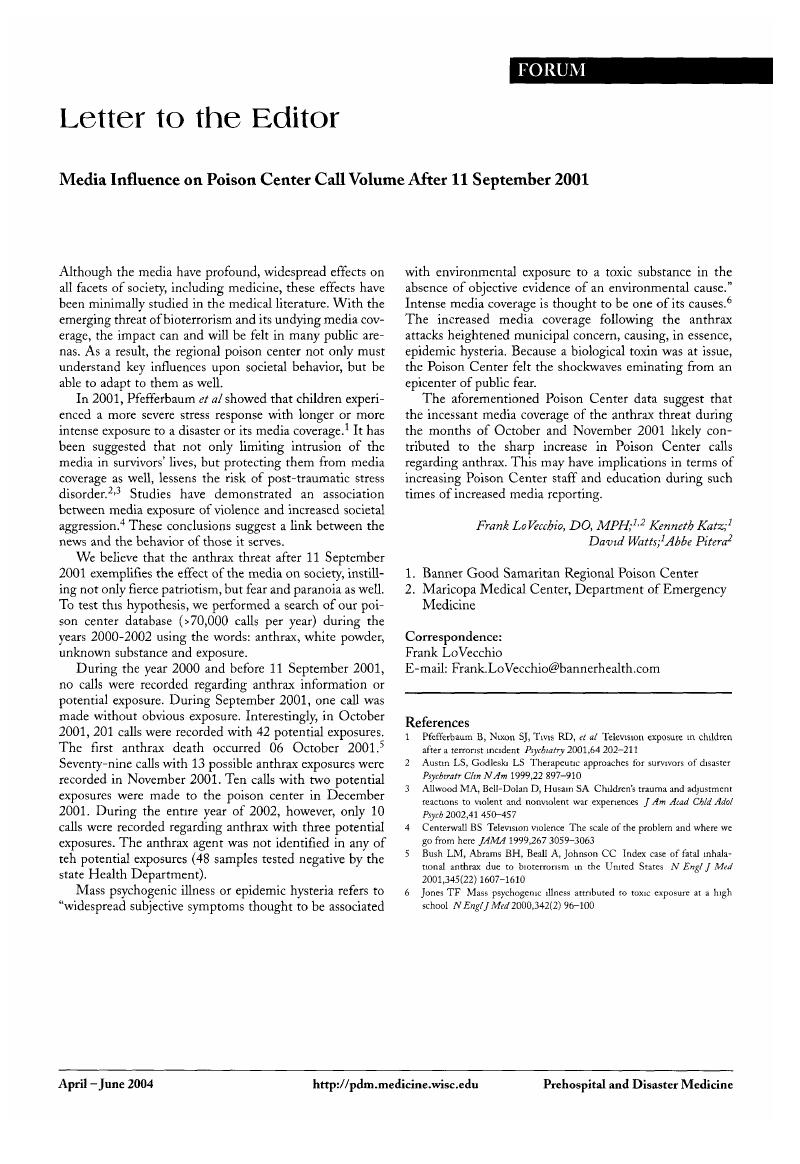Crossref Citations
This article has been cited by the following publications. This list is generated based on data provided by Crossref.
Vassilev, Zdravko P.
Kashani, John
Ruck, Bruce
Hoffman, Robert S.
and
Marcus, Steven M.
2007.
Poison Control Center Surge Capacity during an Unusual Increase in Call Volume–Results from a Natural Experiment.
Prehospital and Disaster Medicine,
Vol. 22,
Issue. 1,
p.
55.
Layish, Ido
and
Cohen, Barak
2010.
Radiological Decontamination, Assessment, and Treatment Center.
Prehospital and Disaster Medicine,
Vol. 25,
Issue. S1,
p.
S60.
Klein-Schwartz, Wendy
Sorkin, John David
and
Doyon, Suzanne
2010.
Impact of the voluntary withdrawal of over-the-counter cough and cold medications on pediatric ingestions reported to poison centers.
Pharmacoepidemiology and Drug Safety,
Vol. 19,
Issue. 8,
p.
819.
Sembower, Mark A.
Ertischek, Michelle D.
Buchholtz, Chloe
Dasgupta, Nabarun
and
Schnoll, Sidney H.
2013.
Surveillance of Diversion and Nonmedical Use of Extended-Release Prescription Amphetamine and Oral Methylphenidate in the United States.
Journal of Addictive Diseases,
Vol. 32,
Issue. 1,
p.
26.
Chatham-Stephens, Kevin
Law, Royal
Taylor, Ethel
Kieszak, Stephanie
Melstrom, Paul
Bunnell, Rebecca
Wang, Baoguang
Day, Hannah
Apelberg, Benjamin
Cantrell, Lee
Foster, Howell
and
Schier, Joshua G.
2016.
Exposure Calls to U. S. Poison Centers Involving Electronic Cigarettes and Conventional Cigarettes—September 2010–December 2014.
Journal of Medical Toxicology,
Vol. 12,
Issue. 4,
p.
350.
da-Silva-Lopes, Bárbara-Cristina
Gil-da-Silva-Lopes, Pedro
and
Jaspal, Rusi
2021.
Exposure to COVID-19 risk representations and state depressive symptoms in a United Kingdom sample: a preliminary experimental study (Representaciones de riesgos referentes a la exposición al COVID-19 y síntomas depresivos actuales en una muestra del Reino Unido: un estudio experimental preliminar).
Studies in Psychology,
Vol. 42,
Issue. 3,
p.
615.



